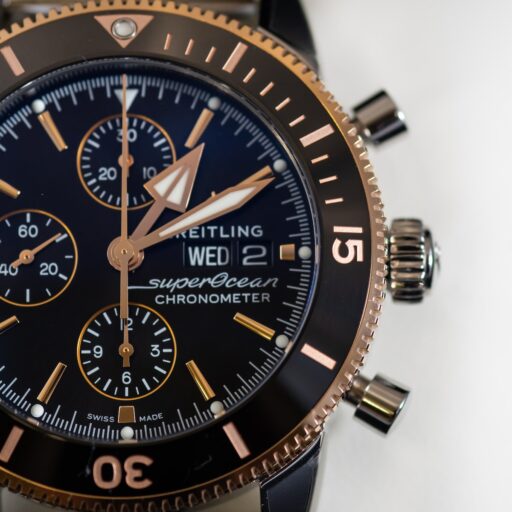Support our educational content for free when you purchase through links on our site. Learn more
What Was the First Ever Best Watch? [2024] ⌚
Have you ever wondered what the first ever best watch was? The answer might surprise you! In this article, we will delve into the fascinating history of watches and uncover the truth about the first watch ever made. Get ready to be amazed by the ingenuity and craftsmanship of our ancestors as we explore the origins of timekeeping devices. So, let’s dive in and discover the remarkable story behind the world’s first watch!
Quick Answer
The first ever best watch in history is the Watch 1505. Crafted by Peter Henlein in 1505, this remarkable timepiece is considered the world’s first watch. Combining German engineering with Oriental influences, the Watch 1505 revolutionized timekeeping and set the stage for the watches we know and love today.
Quick Tips and Facts
- Manufacturer: Peter Henlein
- Display: Analogue
- Introduced: 1505
- Movement: Analogue
- Description: Crafted by Peter Henlein in 1505, the Watch 1505 is considered the world’s first watch, combining German engineering with Oriental influences.
Background: The Birth of Timekeeping

Before we dive into the fascinating story of the Watch 1505, let’s take a moment to understand the background of timekeeping. Humans have always been fascinated by the concept of time and finding ways to measure it accurately. From sundials to water clocks, our ancestors developed various methods to keep track of time.
1. History: The Birth of the Watch

In 1505, Peter Henlein, a skilled German clockmaker, crafted a timepiece that would change the course of history. The Watch 1505, also known as the world’s first watch, was a remarkable invention that combined German engineering with Oriental influences. It was a small fire-gilded copper sphere, resembling an oriental pomander.
Henlein’s creation was a breakthrough in timekeeping technology. Unlike previous timepieces, which were large and stationary, the Watch 1505 was portable and could be worn as a pendant. This innovation allowed people to carry time with them wherever they went, marking a significant shift in the way we perceive and interact with time.
2. Aesthetics: The Beauty of the Watch
The design of the Watch 1505 is a testament to the craftsmanship and attention to detail of its creator, Peter Henlein. The timepiece consists of two small half-spheres joined by a binding hinge, with Roman and Arabic numerals adorning the dial. The combination of these two numeral systems reflects the cultural encounter between European engineering and Oriental form.
3. Technical Description: The Inner Workings of the Watch
Let’s take a closer look at the technical aspects of the Watch 1505. The casing of the watch is made of copper, fire-gilded on the outside and fire silver-plated on the inside. The movement, which is the heart of the watch, is made entirely of iron. The watch runs for approximately 12 hours, providing accurate timekeeping for its users.
4. Financial Worth: A Priceless Timepiece
The Watch 1505 holds not only historical significance but also immense financial worth. In fact, its initial price estimation in May 2014 ranged between 50 and 80 million dollars. This price tag reflects the rarity and cultural importance of this extraordinary timepiece.
5. Examinations and Confirmation: Authenticity Unveiled
To verify the authenticity of the Watch 1505, several examinations were conducted. These examinations confirmed that the watch was indeed created by Peter Henlein in 1505, solidifying its place in history as the world’s first watch. The meticulous craftsmanship and attention to detail showcased in this timepiece are a testament to Henlein’s skill as a master clockmaker.
6. Historical Influences: Building on the Past
The invention of the Watch 1505 was not an isolated event but rather built upon the knowledge and scientific advancements of earlier civilizations. Islamic contributions to mechanical clocks, for example, played a significant role in shaping the development of timekeeping devices. The Watch 1505 stands as a testament to the cultural exchange and cross-pollination of ideas that occurred during this period.
FAQ

What was the first watch in history?
The first watch in history is the Watch 1505, crafted by Peter Henlein in 1505. This remarkable timepiece revolutionized timekeeping and set the stage for the watches we know today.
Read more about “Which Watch is No 1 in the World? …”
What is the most famous watch in history?
While the Watch 1505 holds the title of the first watch in history, there are many other famous watches that have left their mark. From the Rolex Submariner to the Omega Speedmaster, these iconic timepieces have become symbols of style, precision, and craftsmanship.
Read more about “What is the most famous watch in history?”
What was the first wristwatch in history?
The first wristwatch in history is often credited to Patek Philippe, who created a timepiece for Countess Koscowicz of Hungary in 1868. However, wristwatches did not become popular until the early 20th century when they were adopted by military personnel during World War I.
Read more about “History of Watches in the World …”
What is the oldest watch still running?
The oldest watch still running is the Breguet No. 160, also known as the Marie-Antoinette pocket watch. Created by Abraham-Louis Breguet in the late 18th century, this masterpiece of horology is not only a functional timepiece but also a work of art.
Conclusion

The Watch 1505, crafted by Peter Henlein in 1505, holds the title of the world’s first watch. This remarkable timepiece revolutionized timekeeping and set the stage for the watches we know and love today. Its combination of German engineering and Oriental influences showcases the cultural exchange and cross-pollination of ideas that occurred during this period. The Watch 1505 is not only a historical artifact but also a testament to the ingenuity and craftsmanship of our ancestors.
So, the next time you glance at your wristwatch or check the time on your smartphone, take a moment to appreciate the rich history and evolution of timekeeping devices. The Watch 1505 paved the way for the watches we wear today, reminding us of the timeless beauty and functionality of these remarkable creations.
Recommended Links:
- Luxury Watch Brands
- Watch Brand Comparisons
- Guide to Buying Watches
- Men’s Watches
- Affordable Watches
- What is the Most Respected Watch Brand in the World? 2024
Reference Links:


